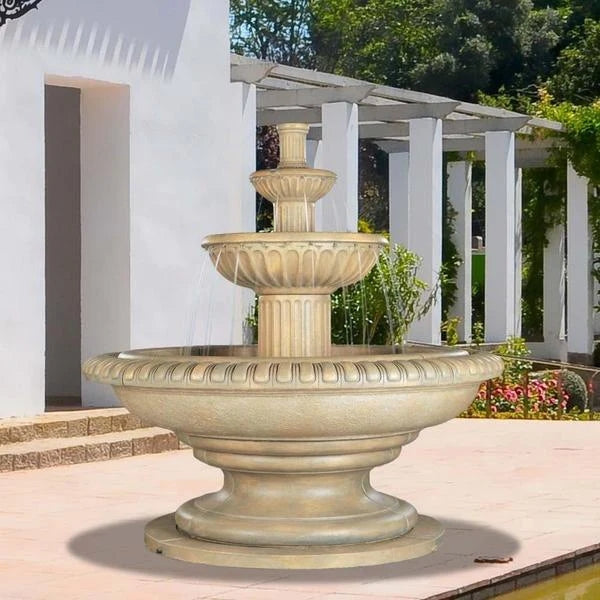Outdoor water fountains are an excellent way to enhance the aesthetics of a large space, be it a garden, park, or a commercial area. They add a serene and majestic touch to the surroundings and enhance the value of a property. However, installing and maintaining large outdoor water fountains can be expensive. This article explores various cost-effective options for those looking to add this feature to their outdoor space.
1. Choose the Right Material
Fiberglass and Resin
One of the most cost-effective materials for large outdoor water fountains is fiberglass and resin. These materials are lightweight, durable, and can mimic the appearance of more expensive materials like stone or bronze. Fiberglass and resin fountains are easier to install and move, if necessary, reducing labor costs.
Concrete
Concrete is another budget-friendly option. It's sturdy and can be molded into various designs. Concrete fountains can withstand harsh weather conditions, making them a long-lasting choice. The initial cost might be higher than fiberglass, but their durability makes them a cost-effective option in the long run.
2. Solar-Powered Fountains
Energy Efficiency
Solar-powered fountains are a great way to save on electricity costs. These fountains use solar panels to harness energy from the sun, eliminating the need for an external power source. This feature not only reduces energy bills but also promotes a green and sustainable environment.
Easy Installation
Another advantage of solar-powered fountains is their ease of installation. Since there's no need for electrical wiring, they can be placed anywhere with adequate sunlight, saving on installation costs.
3. DIY Fountain Kits
Customization and Savings
For those who are handy, DIY fountain kits can be a cost-effective solution. These kits come with all the necessary components and instructions to build your fountain. This option allows for customization and can be significantly cheaper than purchasing a pre-made fountain.
Utilizing Existing Materials
You can also create a unique fountain by repurposing existing materials such as old planters or barrels. This approach not only saves money but also adds a personal touch to your outdoor space.
4. Recirculating Water System
Water Conservation
A recirculating water system is a must for any cost-effective outdoor fountain. This system ensures that the same water is circulated through the fountain, reducing water usage and keeping water bills low.
Low Maintenance
Fountains with a recirculating system require less maintenance since the water doesn’t need to be replaced frequently. This feature saves both time and money in the long run.
5. Seasonal Maintenance
Regular Cleaning
Regular cleaning and maintenance of your fountain can prevent costly repairs. Ensure that the pump is clear of debris and the water level is maintained to keep the fountain running smoothly.
Winterization
In colder climates, it's important to winterize your fountain to prevent damage from freezing temperatures. Draining the fountain and covering it or moving it indoors can save on repair costs.
Conclusion
Large outdoor fountains don't have to break the bank. By choosing the right material, considering solar-powered options, opting for DIY kits, using a recirculating water system, and performing regular maintenance, you can enjoy the beauty and tranquility of a fountain without a hefty price tag. Not only do these options save money, but they also contribute to a sustainable and eco-friendly environment.

